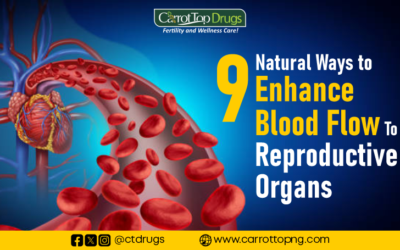Introduction
Symptoms of vitamin deficiency in children are a matter of concern for parents and healthcare professionals alike. Understanding these symptoms is crucial for early detection and intervention to prevent long-term health issues. Exploring the signs of vitamin deficiency sheds light on the importance of a balanced diet and proper nutrition for children’s growth and development.
Prevalence of Vitamin Deficiency in Children
Despite concerted efforts to promote healthy eating habits, vitamin deficiency remains a pervasive issue among children worldwide. Numerous studies have highlighted that a substantial proportion of children fail to meet their daily recommended intake of essential vitamins (Bailey et al., 2018). This concerning trend persists due to a myriad of factors, ranging from dietary choices to socioeconomic disparities and underlying health conditions.
One of the primary contributors to vitamin deficiency in children is inadequate dietary intake. Many children consume diets that are high in processed foods, sugary snacks, and beverages, which are often devoid of essential vitamins and minerals. The lack of emphasis on nutrient-rich foods such as fruits, vegetables, whole grains, and lean proteins further exacerbates this problem (Neumann et al., 2006). Moreover, cultural and societal norms may influence food choices, leading to the perpetuation of poor dietary habits across generations.
Limited access to nutritious foods is another significant barrier to adequate vitamin intake among children, particularly in underserved communities. Food deserts, characterized by a lack of grocery stores and fresh produce options, disproportionately affect low-income neighborhoods, making it challenging for families to access healthy foods (Larson et al., 2009). As a result, children living in these areas are more likely to experience nutritional deficiencies, including vitamin deficiencies.
Furthermore, certain medical conditions can predispose children to vitamin deficiency by impairing nutrient absorption or increasing nutrient requirements. For example, gastrointestinal disorders like celiac disease, inflammatory bowel disease, and cystic fibrosis can interfere with the absorption of vitamins and minerals from food (Semba, 2003). Children with these conditions may require specialized diets or nutritional supplementation to address their specific needs and prevent deficiencies.
Symptoms of Vitamin Deficiency in Children
Symptoms of vitamin deficiency in children can vary depending on the specific vitamin that is lacking in their diet. Here are some common symptoms associated with various vitamin deficiencies:
Symptoms of Vitamin D Deficiency:
- Weakened bones and increased risk of fractures
- Delayed growth and development
- Muscle weakness and fatigue
- Increased susceptibility to infections
Vitamin C Deficiency Symptoms:
- Scurvy, characterized by fatigue and weakness
- Swollen and bleeding gums
- Slow wound healing
- Easy bruising and petechiae (small red or purple spots on the skin)
Symptoms of Vitamin A Deficiency:
- Night blindness or difficulty seeing in low light conditions
- Dry, rough skin and hair
- Poor immune function, leading to increased susceptibility to infections
- Delayed growth and development, particularly in children
.
Vitamin B12 Deficiency Symptoms:
- Fatigue and weakness
- Pale or jaundiced skin
- Shortness of breath and dizziness
- Tingling or numbness in hands and feet
- Poor appetite and weight loss
Symptoms of Vitamin K Deficiency:
- Excessive bleeding or easy bruising
- Blood in urine or stool
- Oozing from mucous membranes, such as gums and nose
- Increased risk of hemorrhage, particularly after injury or surgery
Symptoms of Vitamin E Deficiency:
- Muscle weakness and difficulty coordinating movements
- Vision problems, such as retinal damage
- Weakened immune function, leading to increased susceptibility to infections
- Nerve damage and sensory disturbances
Factors That Contribute to Vitamin Deficiency in Children
Factors contributing to vitamin deficiency in children are multifaceted and can stem from various sources. Here are some key factors along with detailed explanations:
Inadequate Dietary Intake:
Many children do not consume sufficient amounts of essential vitamins through their diet, primarily due to poor dietary choices or limited access to nutritious foods. This is particularly common in low-income families or communities where fresh fruits, vegetables, and fortified foods may be less accessible or affordable (Neumann et al., 2006).
Certain cultural or dietary practices may also contribute to inadequate vitamin intake. For example, children following restrictive diets, such as vegan or vegetarian diets, may be at risk of vitamin B12 or vitamin D deficiency if alternative sources of these nutrients are not adequately incorporated into their meals.
Poor Absorption of Nutrients:
Medical conditions affecting the gastrointestinal tract can impair the absorption of nutrients, including vitamins, even if the child’s diet is adequate. Conditions such as celiac disease, cystic fibrosis, and inflammatory bowel disease can damage the lining of the intestines, reducing the absorption of essential vitamins and minerals (Assiri et al., 2013).
Additionally, certain medications or medical treatments may interfere with nutrient absorption. For example, long-term use of proton pump inhibitors (PPIs) to treat acid reflux or gastric ulcers can reduce the absorption of vitamin B12 and other nutrients by altering stomach acid levels.
Nutritional Deficiencies During Critical Periods:
Infancy, childhood, and adolescence are critical periods of growth and development, during which adequate nutrition is essential. Nutritional deficiencies during these periods can have long-lasting effects on physical and cognitive development.
Breastfeeding infants may be at risk of vitamin D deficiency if they are not receiving adequate supplementation or if their mothers have insufficient vitamin D levels (Wagner et al, 2008). Similarly, toddlers and young children who are picky eaters or have limited food preferences may fail to meet their nutritional needs, leading to deficiencies in essential vitamins. That is why Evergreen Hale and Hearty Kidz is an ideal supplement.
Geographical and Environmental Factors:
Geographic location and environmental factors can influence vitamin D synthesis in the skin, particularly through exposure to sunlight. Children living in regions with limited sunlight exposure or those who spend most of their time indoors may be at risk of vitamin D deficiency, especially during the winter months (Hossein-Nezhad & Holick, 2013).
Environmental pollution, such as air pollution or exposure to heavy metals, can also affect nutrient absorption and metabolism in children, contributing to vitamin deficiencies.
Consequences if Vitamin Deficiency in Children
The consequences of vitamin deficiency in children are profound and can have far-reaching effects on their health and well-being. Here’s a detailed explanation of the consequences, emphasizing the keyword symptoms of vitamin deficiency in children:
Stunted Growth:
One of the hallmark symptoms of vitamin deficiency in children is stunted growth or failure to thrive. Essential vitamins play crucial roles in bone development, protein synthesis, and overall cellular growth. Without an adequate supply of vitamins such as vitamin D, vitamin A, and vitamin C, children may experience impaired bone mineralization, decreased muscle mass, and delayed skeletal growth (Misra et al., 2008).
Vitamin D deficiency, for example, can lead to rickets, a condition characterized by weak and soft bones, bowed legs, and poor growth in children (Holick, 2007). Similarly, inadequate intake of vitamin A can impair bone development and contribute to growth retardation.
Developmental Delays:
Vitamin deficiencies can also affect cognitive development and neurological function in children. Vitamins such as vitamin B12, folate, and vitamin D play essential roles in brain development, neurotransmitter synthesis, and myelination of nerve fibers. Deficiencies in these vitamins can lead to developmental delays, cognitive impairment, and learning disabilities (Benton, 2010).
For instance, vitamin B12 deficiency in infants and young children can result in developmental regression, delayed milestones, and irreversible neurological damage if left untreated (Dror & Allen, 2008). Symptoms may include poor muscle tone, lethargy, and difficulty feeding, indicating neurological impairment.
Increased Susceptibility to Infections:
Vitamin deficiencies compromise the immune system’s ability to fight off infections, leaving children more vulnerable to bacterial, viral, and parasitic illnesses. Vitamins such as vitamin C, vitamin D, and vitamin A play critical roles in immune function, including antibody production, cellular immunity, and mucosal defense mechanisms (Wintergerst et al., 2007).
Children deficient in vitamin C may exhibit symptoms such as frequent colds, slow wound healing, and susceptibility to infections due to impaired immune responses (Abdullah et al, 2023). Similarly, vitamin D deficiency has been linked to increased susceptibility to respiratory infections, including influenza and pneumonia (Cannell et al., 2006).
Organ and Tissue Damage:
Prolonged vitamin deficiencies can lead to irreversible damage to organs and tissues, affecting long-term health outcomes. For example, vitamin A deficiency can cause xerophthalmia, a condition characterized by dryness of the eyes, corneal ulcers, and even blindness if left untreated (Semba, 2003). Vitamin D deficiency may result in osteomalacia in children, a condition characterized by softening of the bones and increased risk of fractures.
Preventive Measures Against Vitamin Deficiency in Children
Preventing vitamin deficiency in children is crucial for ensuring their optimal growth, development, and overall health. Here are some preventive measures along with explanations and references where necessary:
Promoting Balanced Nutrition:
Encouraging children to consume a balanced diet rich in fruits, vegetables, whole grains, lean proteins, and dairy products is essential for meeting their vitamin requirements. Emphasizing the importance of diverse food choices ensures adequate intake of essential vitamins such as vitamin A, vitamin C, vitamin D, and vitamin E (Ruel & Rivera, 2013).
Including a variety of colorful fruits and vegetables in children’s meals provides a wide range of vitamins and minerals necessary for growth and immunity. Leafy greens, citrus fruits, berries, carrots, and sweet potatoes are excellent sources of vitamins A and C.
Fortification of Foods:
Fortifying staple foods with essential vitamins and minerals is an effective strategy to address micronutrient deficiencies in populations, including children. Fortification programs involve adding vitamins such as vitamin A, vitamin D, and B vitamins to commonly consumed foods like flour, rice, milk, and cereal (Allen & de Benoist, 2006).
Fortified foods can help bridge nutritional gaps, especially in regions where access to diverse and nutrient-rich foods is limited. For example, fortifying salt with iodine has been successful in preventing iodine deficiency disorders, including goiter and cretinism, in children (Andersson & Karumbunathan, 2012).
Supplementation:
Providing vitamin supplements to children at risk of deficiency can help ensure adequate intake of essential nutrients. Pediatricians may recommend supplements containing vitamins such as vitamin D, iron, vitamin B12, and folic acid for children with specific dietary restrictions, medical conditions, or those living in regions with limited sunlight exposure (Pasricha et al., 2013).
Our Evergreen Hale & Hearty Kidz contains is a supplement that can ensure adequate intake of the necessary vitamins.
Breastfeeding and Infant Nutrition:
Promoting exclusive breastfeeding for the first six months of life and continued breastfeeding alongside complementary foods up to two years of age or beyond provides infants with essential vitamins and antibodies for optimal growth and development (Victora et al., 2016).
For infants who are not exclusively breastfed or those with specific nutritional needs, appropriate infant formulas fortified with vitamins and minerals are available to ensure adequate nutrient intake during the critical early stages of life (Koletzko et al., 2019).
Education and Awareness:
Educating parents, caregivers, and healthcare providers about the importance of nutrition, vitamin-rich foods, and preventive measures against deficiency is essential for promoting children’s health and well-being. Providing accurate information about dietary guidelines, food sources of vitamins, and the consequences of deficiency empowers individuals to make informed choices for their children’s nutrition (Jones et al., 2014).
Community-based nutrition education programs, school interventions, and healthcare outreach initiatives play crucial roles in raising awareness about vitamin deficiency and implementing preventive strategies at the population level.
Treatment Options for Vitamin Deficiency in Children
Ensuring adequate treatment for vitamin deficiency in children is essential to address existing health issues and prevent long-term complications. Here are several treatment options along with explanations and references where necessary:
Nutritional Therapy:
Nutritional therapy involves increasing the intake of foods rich in the deficient vitamin to correct the deficiency. For example, increasing consumption of vitamin D-rich foods such as fortified milk, fatty fish, and eggs can help address vitamin D deficiency (Misra et al., 2008).
Nutritional therapy focuses on promoting a balanced diet that includes a variety of vitamin-rich foods to meet the child’s specific nutritional needs and support overall health and development.
Supplementation:
In cases where dietary intake alone is insufficient to correct the deficiency, supplementation with vitamin preparations may be necessary. Pediatricians may prescribe vitamin supplements in appropriate doses to address specific deficiencies (Wagner et al., 2008).
Vitamin supplements are available in various forms, including tablets, capsules, liquids, and chewable formulations, making them suitable for children of different ages and preferences.
Parenteral Therapy:
Parenteral therapy involves administering vitamins intravenously or intramuscularly in cases where oral supplementation is ineffective or not feasible. This method ensures rapid delivery of vitamins directly into the bloodstream, bypassing the gastrointestinal tract (Hardy et al., 2020).
Parenteral therapy is reserved for severe cases of vitamin deficiency or when the child is unable to tolerate oral supplementation due to gastrointestinal issues.
Monitoring and Follow-up:
Regular monitoring of vitamin levels and nutritional status is essential during and after treatment to assess the child’s response to therapy and adjust interventions as needed. Healthcare providers may conduct blood tests to measure serum levels of specific vitamins and evaluate the effectiveness of treatment (Bode & Bode, 2003).
Follow-up appointments with pediatricians or dietitians allow for ongoing assessment of dietary habits, nutritional intake, and overall health to prevent recurrence of vitamin deficiency.
Education and Counseling:
Educating parents, caregivers, and children about the importance of maintaining adequate vitamin levels and adopting healthy eating habits is integral to long-term management. Providing guidance on selecting vitamin-rich foods, meal planning, and portion control empowers families to make informed choices for their children’s nutrition (Gidding et al., 2005).
Counseling sessions may address factors contributing to vitamin deficiency, such as dietary preferences, cultural practices, or socioeconomic barriers, and offer practical strategies to overcome these challenges.
Conclusion
In conclusion, the prevalence of vitamin deficiency in children remains a significant public health concern worldwide. Addressing this issue requires a multifaceted approach involving nutrition education, improved access to healthy foods, supplementation like Evergreen Hale & Hearty Kidz and targeted healthcare interventions. By prioritizing children’s nutritional needs and implementing proactive measures, we can mitigate the impact of vitamin deficiencies and promote optimal health and well-being for all children.
FAQs
Q: What are the common symptoms of vitamin deficiency in children?
A: Common symptoms include fatigue, weakness, delayed growth and development, frequent infections, skin rashes, and mood changes.
Q: How prevalent is vitamin deficiency among children globally?
A: Vitamin deficiency is prevalent among children worldwide, affecting a significant proportion of the population, particularly in low-income and resource-limited settings.
Q: What factors contribute to vitamin deficiency in children?
A: Factors such as poor dietary intake, limited access to nutritious foods, inadequate sunlight exposure (for vitamin D), certain medical conditions, and malabsorption issues contribute to vitamin deficiency in children.
Q: How can parents ensure their children get enough vitamins?
A: Parents can ensure their children get enough vitamins by providing a balanced diet rich in fruits, vegetables, whole grains, lean proteins, and dairy products. They can also consider supplementation under the guidance of a healthcare professional.
Q: Are vitamin supplements necessary for all children?
A: While a balanced diet is the best way to obtain vitamins, supplements may be necessary for children with specific dietary restrictions, medical conditions, or those at risk of deficiency. However, supplementation should be recommended and monitored by a healthcare provider.
Q: Can vitamin deficiency lead to long-term health problems in children?
A: Yes, severe or prolonged vitamin deficiency in children can lead to long-term health problems, including stunted growth, weakened immune function, developmental delays, and increased risk of chronic diseases later in life.
Q: How can vitamin deficiency in children be prevented?
A: Vitamin deficiency in children can be prevented by promoting breastfeeding, encouraging a varied and nutritious diet, fortifying foods with essential vitamins, providing supplementation when necessary, and educating parents and caregivers about the importance of proper nutrition. Regular pediatric check-ups can also help identify and address any emerging deficiencies early

















